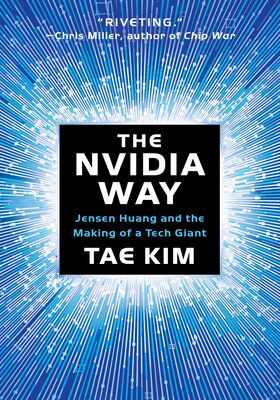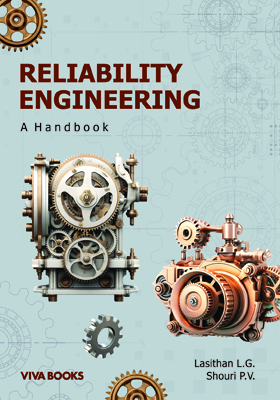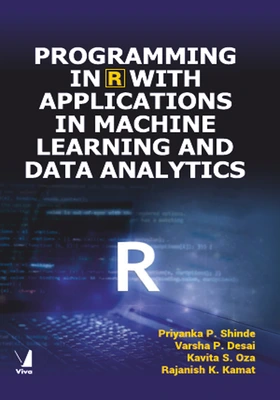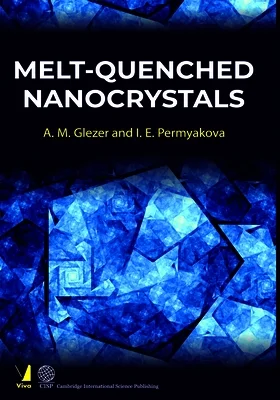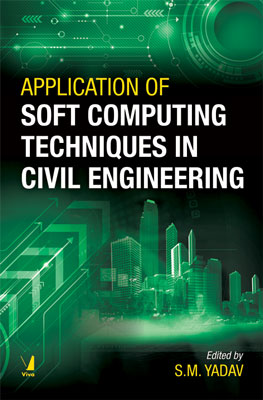Food Engineering
Food Engineering
Process and Technology
₹895.50 ₹995.00 Save: ₹99.50 (10%)
Go to cartISBN: 9788130934525
Bind: Paperback
Year: 2017
Pages: 624
Size: 172 x 242 mm
Publisher: Viva Books Originals
Sales Territory: Worldwide
Description:
With the ever-increasing population need of the hour is to feed the citizenry by suitably processing and preserving the excess food so that spoilage is minimum. Thus, to keep pace with the accelerating need of food preservation, food technology is making incredible growth around the globe.
The spotlight of the book Food Engineering: Process and Technology is on treatment, quantification and design which provide scholars and students with the skills to identify the threats and protect against them.
Key areas covered include:
- Systematic design of food processing
- Genetic Engineering in food plants
- Educational Knowledge of food technology industry
Target Audience:
Students and academicians of Food Technology, Food Processing, Food Engineering, Biochemical Engineering, Biotechnology and Chemical Engineering. It is also useful for Food Processing Institutes and Tinned food & Beverages Industries.
Contents:
Preface • Acknowledgements
Chapter 1: Introduction
Introduction • Perspectives of Food Problem • Forecast and Fear • Extent of Human Food Deprivation and Needs • Additional Dimensions in Food Problem • Entrepreneurship Scope in Food Technology • Scope of Conventional Processed Foods • Foods for Future • Foreword • Unconventional Health Food Components • Ecological Engineering Concerns in Sustainable Food Cycle • Universal Hypercycles Involvement in Ecological Cycles Function • Land Region and MPI in Soil for Food Security • Water: Resource Quality, Availability and Management in Food Production and Processing • Forestry and Agriculture • Marine Fisheries and Aquatic MPI • Pesticides: To be used or not • • Energy in Agriculture • GMO/Alien Species Load • Glimpses of Food Biotechnology • Raw Materials for Food Processing • World Scenario of Food Availability/Production/Output • Current News on Food Fronts • Bamboo as a Food and Source of Sugar • Bamboo as Important Ecological Plant, i.e., Feed Plant • Acknowledgement • Further Reading
Chapter 2: Food: Definition, Function, Chemical Constituents and General Properties
Introduction • Definition of Food and Functions • Chemical Constituents of Foods • Food Categories • Fresh Food • Preserved Food • General Properties of Foods • Characteristics in Brief • Molecular and Chemical • Physical • Nutritional/Biological • Biodegradation • Sensory • Textural • Storage • Food Classification • Solid Foods • Liquid Foods • Needs of Food Processing and Preservation • Further Reading
Chapter 3: Recent Food Analysis Methods and Instruments
Introduction • C, H, N Analysis and Analyser • Operation • Carbohydrate Estimation by Orcinol Method • GC Analysis in Food Industry • Instrumental Analysis of Food Gels • Foreword • Materials and Methods • Rheological Analysis of the Gels • Involved Combinatorial Chemistry • Result and Discussion • SEM Analysis • Scanning Electron Microscopy of Spirulina Fortified • Wheat Flour Based Infant Foods • NMR Analysis • Nuclear Magnetic Resonance Spectroscopy • FTIR Analysis • Acknowledgements • ELISA Technique of Food Analysis • Monoclonal or Polyclonal Antibodies • • Potential Uses of ELISA in Routine Food Analysis • Flow Injection Instrumental Analysis of Food • HPLC and LCMS Analysis • Oxygenation in Plants • Study of nod Gene Expression of R. trifolii SN 10 • Environmental Pollution and Alien Species Stresses on Ecobiotechnology in Food Supply • PCR Analysis of Food Systems • Amplification and Sequencing of nod A Promoter and • Adjoining Region of R. trifolii SN 10 • Rice Seed Exudates Inhibit R. trifolii SN 12 nod Gene Expression • Further Reading
Chapter 4: Food Microbiology: Fundamental Concerns
Introduction • Microorganisms in Foods • Characteristic Microbes • Thumb Rule of Classification • Basics of Living Cells • Common Biocells of the Universe • Food Products by Positive Bioconversions • Microorganism in Food and Growth Factors • Microorganisms in Negative Bioconversions of Food • Microbial Contamination Sources in Food • Food Poisoning Spoilage • Detection of Food Poisoning Bacteria • Asepsis in Food Handling • Aseptic Canning of Milk • Further Reading
Chapter 5: Food Engineering Properties and Processing Equipment
Introduction • Food Sols, Food Gels and Food Rheology • Fluid Food Models • Estimation of Food Rheology Parameters • Other Textural Properties of Foods • Definition and Terminologies • Purposes of Measurement of Food Texture • Factors and Principles of Measurement • Methods of Measuring Texture of Foods • Further Reading
Chapter 6: Unit Operations and Processes in Industrial Food Technology
Introduction • Cooking and Canning Operation • Containers • Glass Containers • Tin Containers • Dimensions of Cans Fabrication and Types • Can Corrosion • General Canning Operation • Reasons of Canned Product Spoilage • Process Time Evaluation • Residence Times • Size Reduction of Foods/Milling of Cereal Foods • Needs of Size Reduction and Separation • Milling of Cereal Foods • Governing Theories/Laws in Brief of Milling • Foods from Milled Cereals and Pulses • Food Heating, Drying and Dehydration • Foreword • Dielectric/Microwave Heating of Foods • Drying of Biological Products • Deep Fat Frying • Food Preservation through Solvent Drying • Freezing of Foods • Slow Freezing of Foods • Quick Freezing of Foods • Concentration of Liquid Foods/Food Materials • Evaporation • LTV Evaporator: Falling Film Type • Concentration of Milk Whey by Membrane Processing • Sterilizable Flexible Packaging • Packaging of Processed Foods • Selection Considerations • Daily Life Packaging Materials and Retortable Pouches • Further Reading
Chapter 7: Food Colours, Spices and Smell/Flavour/Odour
Introduction • Food Colours and Colourants • Definition • Types • Sources of Food Colourings • Technological Constraints in Food Colouring Production • Food Spices and Industries • Food Flavours/Odours/Smells/Aroma • Definition and Chemical Constituents • Microbial Method of Food Flavour Production • One Stage Process • Medium for One Stage Process • Relation of • OH and Flavour Response • Quality Evaluation • Food Flavour/Aroma Extraction • Theoretical Concepts • Fluid-Liquid Phase Equilibrium • Tests of Flavours • Further Reading
Chapter 8: Prevention Food Adulteration: Law and Safety Rules
Introduction • Food Toxicants Type • Factors Influencing Safety and Quality of Foods • Definition of Food • Definition of Adulterants and Adulteration in Food • What Constitutes Adulteration/Agents in Food Adulteration • Few Common Adulterants in Foods and Simple Tests for Detection • Appendix • I • Appendix • II • Regulatory Provisions for Prevention of Adulteration • Prevention of Food Adulteration Act (PFA) and Rule • Further Reading
Chapter 9: Food Processing Industry Water Quality, Solid and Liquid Wastes Treatments and Disposal
Introduction • Potable Water Resources and Qualities • Introduction • Canneries Use of Potable Water • Potable Water Quality in Breweries • Potable Water Quality in Dairy Industry • Food Processing Industry Solid Wastes Origin and Characteristics • Canning Industry • Milling Industry • Dairy Industry • Treatment of Solid Food Wastes • Anaerobic Digestion: Biogas and Biomanure • Bioconversion: For Food, Fuel and Compost • Food Processing Industry Liquid Wastes Origin and Characteristics • Introduction • General Concerns and Principles • Treatment Biotechnology for Wastewaters • Brewery and Distillery Effluents • Treatment of Liquid Wastewaters Using Biochemical Reactions • Basic Biological Processes • Aerobic • Anaerobic • Facultative • Disposal of Treated Wastewaters and Wastes • Further Reading
Chapter 10: Food Industry Waste Heat Water Recycling
Introduction • Attributes of Waste Heat Water • Heat Pump Design Approaches • Applications of Heat Pump in Food Industries • Potential of Improvement of Heat Pumps • Predicting Heat Pump Performance • Parameters • Experimental • Influential Factors • Further Reading
Chapter 11: Food Processing Equipment Design Calculations: Tomato Juice Concentration and Baker's Yeast Production Cases
Introduction • Tomato Juice Concentration Unit Design Calculations • Design Problem Statement • Introduction • Evaporator Design Steps • Condenser and Ejector • Calculations of Other Design Dimensions • Materials of Construction • Baker's Yeast Production Unit Design Calculations • Introduction • Design Problem Statement • Manufacturing Process Steps • Equipment to be Designed • Design Calculations • Materials of Construction • Further Reading
Chapter 12: Few Commercial/Industrial Food Products and Drink Manufacture/Preparation
Introduction • Conventional Foods • Traditional Microbially Fermented Health Foods from Milk • Bread/Chapati • Rice/Minute Rice • Fruit Based Food Products • Fruit and Vegetable Based Food Products • Non-conventional Food and Feed • Mushrooms • Single Cell Protein (SCP) • Single Cell Oil (SCO)/Biolipids • Protein Fortified Foods • Combinatorial Food Materials • Introduction • Types of Sweetmeat • Processing for Pudding Sweetmeat • Further Reading
Chapter 13: Principles of Transgenic/Bioengineered Food Production
Introduction • Definition of Transgenic/Bioengineered Food • Hurdles in Marketing Transgenic/Bioengineered Foods • Why there is Distrust of GEFs from Plants • • Changing Attitudes Towards GEF • Construction of Transgenic/Bioengineered Food and GMF Crops: The Approach • Requirement in Types of Food • Role of Chemotaxis in the MPI • Transgenic Analysis of the Interaction • Characteristic of Rhizobium leguminosarum bv. trifolii SN 10 • Growth Promoting Activity of R. trifolii SN 10 • Colonization of Rice Root by R. trifolii SN 10 • Rice Root Exudates Stimulate Chemotaxis • Identification of Flavonoid in Rice and Trifolium Exudates • Gene Transfer Methods • Bacterial DNA Insertion Method • Microinjection Method • Genetic Shotgun/Biolistic Method • Electroporation Method • Whiskers Transfer Method • Impact of Transgenic Cells in Nature • Innovative Foods Through Gene Transfer • Plant Foods with Enhanced Resistance to Insects • Further Reading
Chapter 14: Numerical Problems, Questions and MCQ in Food Technology
Introduction • Food Microbiology Numericals • Food Processing Time Evaluation • Pasteurization • Sterilization/Canning • Drying/Dehydration of Foods • Freezing Preservation of Food • Concentration of Fruit Juice • Size Reduction of Cereal Food • Solid State Cultivation of Food • Food Industry Waste Treatments • Food Rheology • Downstream Processing in Food Technology • Miscellaneous Problems in Food Processing • Questions on Food Engineering and Processing Technology • Multichoice Questions (MCQ) • Further Reading
Index
About the Author:
With many works to his credit, the author has given a direction to studies and researches conducted in the field of Food Processing. Satya Narayan Mukhopadhyaycompleted his B.Sc. Honours in Chemistry from Calcutta University, B.Tech. and M.Tech. in Food Technology and Biochemical Engineering from Jadavpur University, and Ph.D. from the Indian Institute of Technology (IIT), Delhi. He started his teaching career at Harcourt Butler Technological Institute (HBTI), Kanpur and later at IIT Delhi. A recipient of the Japan Society for the Promotion of Science (JSPS) Award and Fulbright Fellowship, he is a Life Fellow at the Indian National Academy of Engineering and the Indian Institute of Chemical Engineering, and is a Life Member of the Indian Society for Technical Education. He retired as Professor from IIT Delhi, and thereafter served as a Professor at Gautam Buddha University for few months and is currently Adjunct Professor, Department of Biological Sciences, Birla Institute of Technology and Science, Pilani. Prof. Mukhopadhyay's publications include Oxygen Responses, Reactivities and Measurements in Biosystems, Process Biotechnology Fundamentals, Advanced Process Biotechnology, Experimental Process Biotechnology Protocols, and Process Biotechnology: Theory and Practice.

